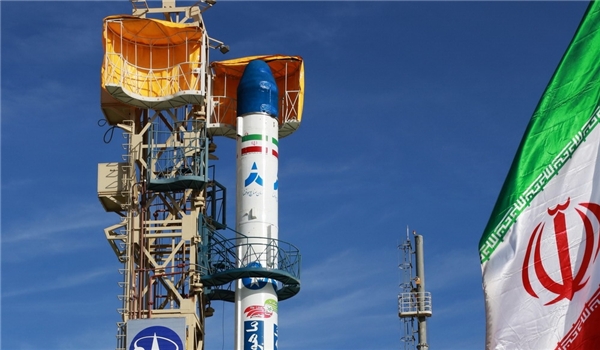Despite a report two weeks ago from Medium.com that Iran’s space program was unceremoniously shut down, it appears to be alive and well. Iran successfully launched a small satellite into orbit for the fourth time, just a day ahead of Iran’s national space day.
Here’s Iranian PressTV’s video of the launch.
The satellite was named Fajr, or Dawn, and is already being tracked by NORAD’s spacetrack.org (along with its upper stage) in a 224 x 470 km orbit with 55.53 degree inclination.
Hobbled by sanctions and the inherent difficulty of space launch, Iran’s space program has been struggling to build on its initial success of getting three small, fragile satellites into orbit. Fajr was meant to launch more than 2 years ago, in May 2012. The launch was never announced, and analyses published in Jane’s Intelligence Review reported that the launch—as well as another in fall 2012—probably failed, going by images of scorch marks on the launch pad.. There may have been another failed attempt in February 2013. Iran has taken the approach of building an inventory of satellites, via numerous academic and industrial programs, so multiples copies of the Fajr are possible.
Fajr
The Fajr satellite is reported to be 50 kg, so it is comparable to the previous satellites Iran has placed in orbit. What is notable about Fajr is that it is the first Iranian satellite to have an on-board propulsion system, which is believed to be a simple cold gas thruster. This permits changing the satellite’s orbit, which can extend its lifetime significantly if it can be raised to an orbit with less atmospheric drag. PressTV reported that Fajr could stay in orbit for a year and a half and has a target orbit of 450 km. Eighteen months is a reasonable lifetime for a circular orbit at that altitude. Fajr reportedly uses solar cells that would power operations for that lifetime. An on-board navigation system helps Iran track it. Fajr will take relatively low-resolution images of the earth and transmit them back to Iranian ground stations. The satellite reportedly has already successfully communicated with its operators.
Context
This launch was from the same launch complex with the same type of launcher (Safir) as the previous three satellite launches, and is an incremental advance. We still have yet to see a launch of the liquid-fueled Simorgh launcher that Iran has been reported for years to be developing, which is several times more massive than the Safir and has the capacity to lift heavier payloads and to higher orbits.
In the larger context, the Safir launcher is a modest rocket, and isn’t derived from an ICBM nor is it an ICBM precursor. In PressTV video, the announcer reflects that this launch shows that Iran is not coming to negotiations from a point of weakness but of technological strength, indicating that the success of the space launch program may have political importance domestically in Iran.

